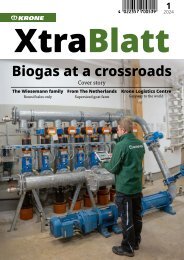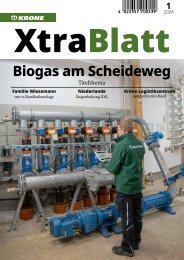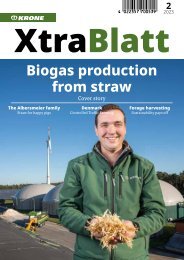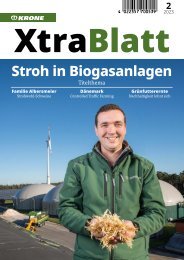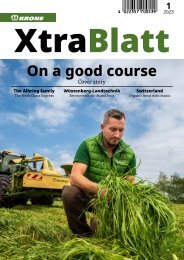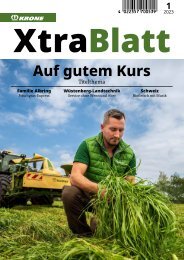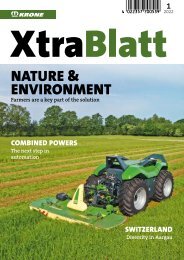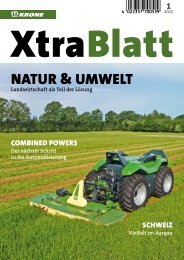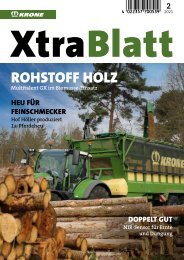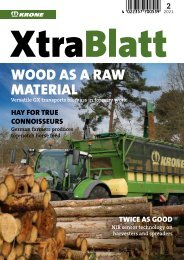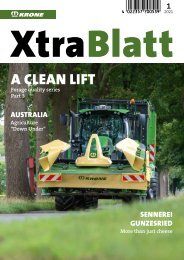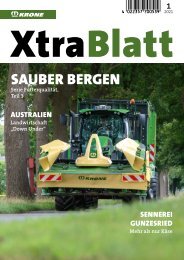XtraBlatt Issue 02-2017
You also want an ePaper? Increase the reach of your titles
YUMPU automatically turns print PDFs into web optimized ePapers that Google loves.
more common grass, the weather allows<br />
only a maximum of two cuts per season,<br />
in June and September.<br />
NEW BLOOD A<br />
PROBLEM<br />
Even although agriculture in Japan, and<br />
especially in Hokkaido, is highly respected<br />
within the population, there’s a real problem<br />
in encouraging younger generations<br />
into the sector – as in many other parts of<br />
the globe. Average farmer age is 64. Every<br />
year, the number of farms reduces by 4%.<br />
With young people, a career in farming<br />
is just not “hip”, a problem known all too<br />
well throughout industrial countries.<br />
of the US or southern Canada, areas also<br />
lying between latitudes 40 and 45 N. This<br />
also means that winters are long, sometimes<br />
lasting right into May, with lots of<br />
snow – in total about 4 m of the white<br />
stuff. Average precipitation is a plentiful<br />
1100 mm per year.<br />
For the above reasons Hokkaido tends to<br />
be unsuitable for rice cultivation compared<br />
with the main central islands of Japan.<br />
Neither is it a typical arable region.<br />
The relief map is characterised by ranges<br />
of mountains and hills. So farmers are<br />
left with the options of livestock raising<br />
and grass husbandry, rural skills that are<br />
highly regarded in the region. You see this<br />
right away getting off the ‘plane at the<br />
local airport of Nakashibetsu, with regional<br />
dairy products proudly presented on<br />
the premises. Vegetables are also grown<br />
in many parts of this island.<br />
Alongside concentrates, grass silage is<br />
the main feed for cattle. Growing period<br />
for maize is generally too short here, with<br />
just 75 - 85 days. However, small maize<br />
fields are seen here and there. With the<br />
Masashi Yasuda found his happiness in<br />
farming, running an 80 ha dairy farm<br />
only a few kilometres out of Nakashibetsu.<br />
“200 cows, 95 of them in-milk, are<br />
in my barns. Average milk production:<br />
10,000 l/year.” He belongs to a machinery<br />
ring with members farming a total 300<br />
ha. The society runs a BiG X 650 with 3m<br />
pickup for the first silage cut over about<br />
one third of the land area. But the larger<br />
proportion of forage is baled as grass silage<br />
by round balers. “We have two cuts<br />
per year whereby average yield is about<br />
20 t fresh weight per ha,” explains Yasuda.<br />
At harvest, dry matter content (dm) is<br />
around 30% and chop length 13 mm. The<br />
low dm means silage additive is usually<br />
added in the clamp. Wilting depends on<br />
the weather and there’s often only half<br />
a day for this. On the few forage maize<br />
fields, the climate also means that only<br />
50 t/ha can be carted home. Hereby, none<br />
15



